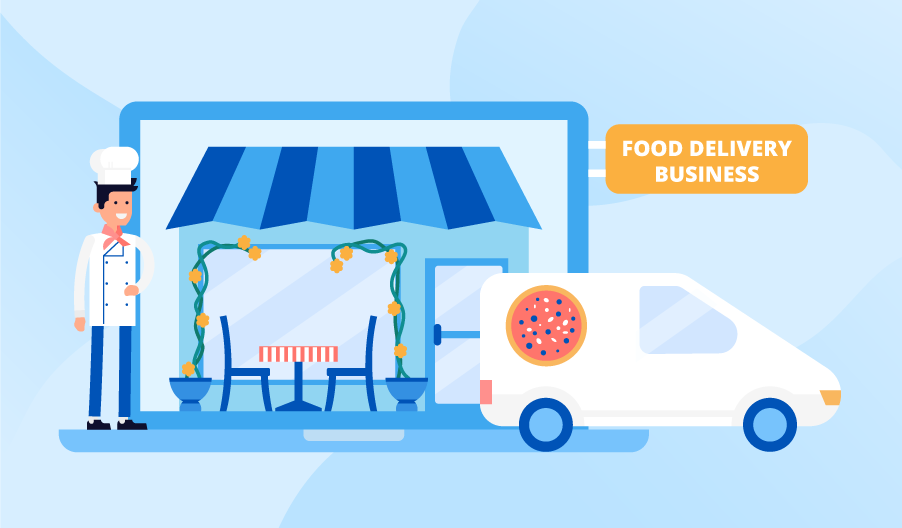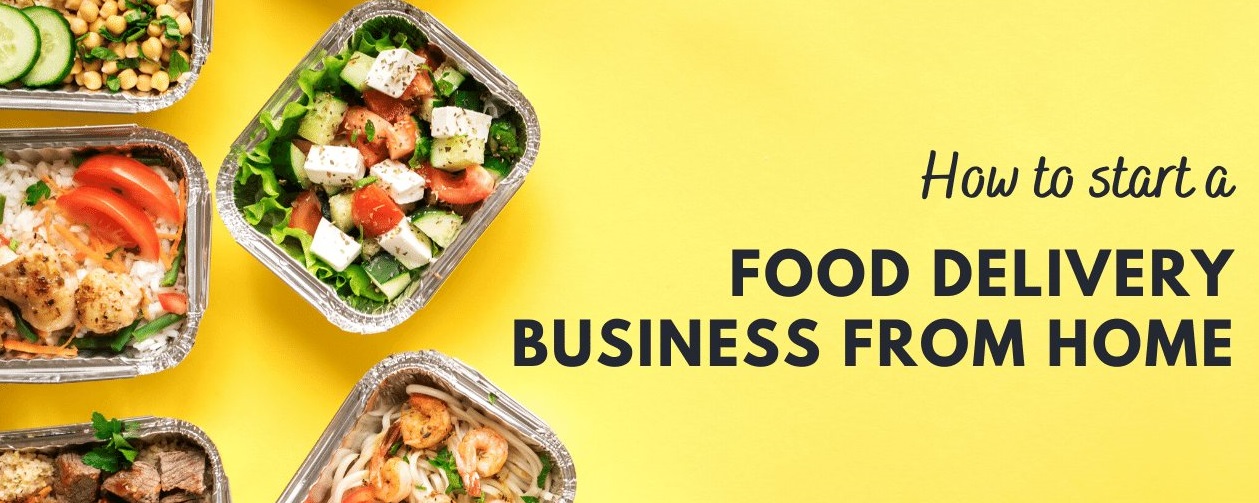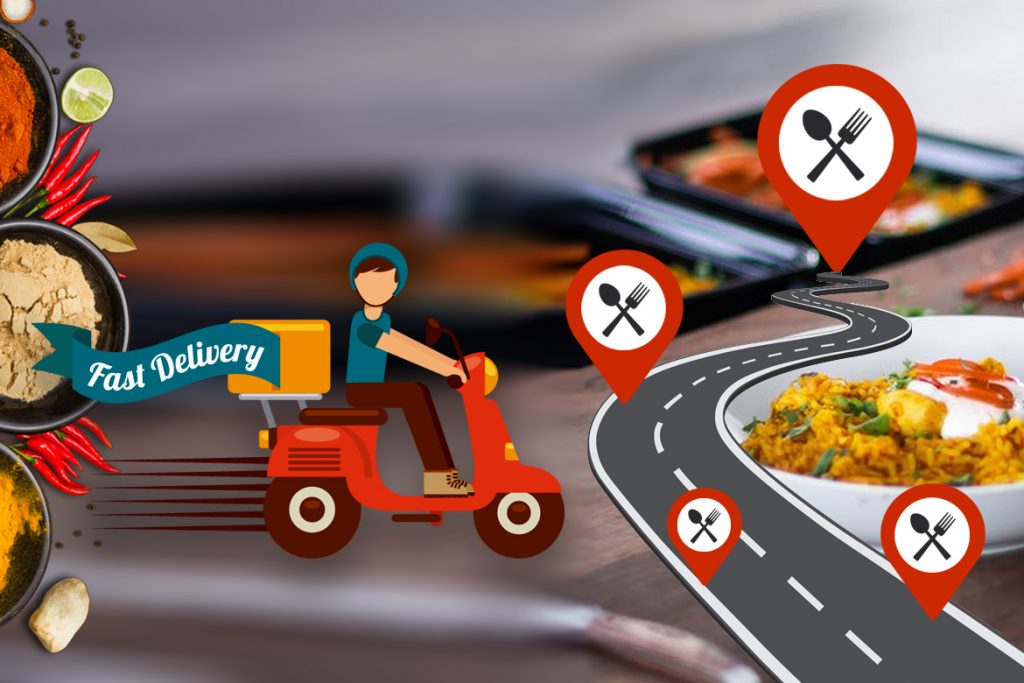Appealing, user-friendly apps and tech-enabled driver networks have made the online food delivery business a buzzword among consumers. Starting a virtual restaurant is a long voyage for operators who want to enter a highly competitive industry with the slightest entry barrier.
For online food delivery entrepreneurs who want to test markets without having an existing customer base or to have visibility in a high foot traffic area, approaching this business will be a great kickstart to test the waters. There is a potential for this service product to create a whole new segment of foodservice providers somewhere between food trucks and restaurants.
Hence, beginner entrepreneurs need to focus on the fundamental properties of an online food delivery business. It is likely to remain a permanent fixture on the dining topography.
Choose the Right Business Model for Your Food Delivery Business from Home
A business model refers to a company’s strategy to make a profit. It itemizes the products or services it plans to sell, the target market, and any anticipated expenses.
It is expected that revenue in the online food delivery segment will cross $3.39 Billion in 2022, so choosing the right business model will determine your success. There are many competitive options in this market, but delivery solutions for drivers can help your business stay efficient and affordable.
Full-Service Business Model
Full-service businesses generally offer all the reasonable needs and want of their customers within their specialized industry, although this can vary from company to company. You need to go beyond providing one service and offer your clients more options.
As a manager or owner of a business, you must know what services your customers need. You can build customer loyalty, strengthen your brand, and increase repeat business by providing a higher service and care to your customers. If you decide what services to offer, you must consider additional costs and determine how those costs can be covered.
Partial Service
This business model doesn’t involve delivering your products and services. Some foods will be prepared in your kitchen, and others will be ordered for your menu. You will also outsource the delivery process with partial service so that customers receive their food from your home.
On-Demand Business Model
On-demand businesses aim to quickly deliver goods and services to the customer’s doorstep. In a time when we seek instant answers to everything, on-demand economics focuses on speed and convenience.
As a result of the tremendous growth potential of the market, many companies have developed an on-demand platform that can provide services to clients in real-time. With on-demand platforms, consumers have solutions at their fingertips through mobile apps.
Figure out What’s Needed to Start a Food Delivery Business from Home
Are you picturing yourself stirring your signature dish on a hot stove while thinking about a successful food delivery business? You’ll need more than a love for culinary innovation if you want to ignite the taste buds of swooning patrons.
Learn how to start an online food delivery business from home that lets you combine your interest in food with your career. A home-based food business requires a lot of planning and research to get off the ground. Before a sale can occur, permits, inspections, and marketing strategies are needed. We have listed some basics to consider when starting a food business from home.
A Kitchen Space
The size and configuration of your kitchen will depend on the scale and goals of your business. There should be enough space for cooking, preparing, and storing supplies.
Sorting out Delivery Vehicle
As soon as your customers order, you must make sure the food reaches them safely and promptly. This requires reliable drivers. Always hire licensed drivers. You can verify whether they have a record of accidents or driving violations. As a side note, these drivers are your online restaurant’s waitstaff. Train them to boost customer satisfaction by teaching them basic customer service skills.
How to Source Ingredients
It may be more cost-efficient to purchase ingredients at consumer warehouse centers when you are just getting started and producing small batches. You might find suppliers by word-of-mouth or through personal introductions in specific industries. Seek out distributors and brokers who deal directly with farmers. Collaborate with other small-batch producers to buy wholesale ingredients in bulk.
Research Your Target Market and Plan Your Services
Online food delivery businesses that know their audiences are more likely to succeed. Are you surrounded by a university, business park, or suburban households in the area where you will operate your business? Your audience’s demographics can influence your marketing strategy and the meals you serve.
There are several ways to conduct your research in your community. You can request information from your local business bureaus or go into the community and ask/observe what people need. Understanding your target market allows you to develop menus and services that appeal to them.
What type of meals do you plan to make? Will it be quick meals, healthy snacks, lunch, dinner, meals for two, or a single person? Having a clear vision for your delivery business will help you.
Set Up Suitable Channels for Receiving Orders
There are several ways to take orders, including phone calls, text messages, WhatsApp messages, websites, mobile applications, and social media. Taking orders via phone calls, text messages, and WhatsApp requires the least capital. The social media handles you use can collect orders and promote your company. An online food delivery software program can also serve as a one-stop platform for creating a website, receiving orders, and managing deliveries.
Figure Out Your Pricing and Profit Margins
As soon as you have a firm grasp of your market and logistics requirements, you are ready to do budgeting, revenue forecasting, and demand forecasting. This includes calculating:
- Estimate your revenue based on what you think you will earn. Using this projection, you can assess your risks, determine when your business will break even, and determine how much upfront cost you can handle.
- In addition to what you need to buy upfront, you will also need to purchase supplies, vehicles, etc., during the first three years of your business. Ensure payroll expenses, business licensing fees, vehicle maintenance, gas, and tolls.
- Pay close attention to billing cycles and create a balance sheet. Cash flow problems occur when more money goes out than in 30 days.
Pick Packaging that Reflects Your Brand
You can capitalize on repeat sales with the right packaging and presentation, but only if they align with your brand. Consider that your market research indicated a need for sustainable food delivery services in your area. In line with your brand image and marketing strategy, choosing biodegradable or reusable cartons would be wise.
Whether your online food delivery brand is ecocentric, most consumers prefer to order food delivered from brands that use biodegradable or recyclable packaging. All aspects of your business, including the packaging you use for food transportation, should work together to create a cohesive brand.
Get a Test Run for Your Model
Allow your team to practice and work out kinks in your physical workflow by offering your services to a limited clientele. You can track how long it takes drivers to reach different areas and how much time they spend at each stop. You can fine-tune your routing and scheduling by incorporating the insights you gain from taking a test run. If you have more concrete information, you’ll be able to develop a better capacity plan, making scaling operations when demand picks up much more accessible. During your test runs, you can also obtain feedback regarding pricing and which features, such as food and services, your customers most prefer.
Getting the Word Out There
Your marketing efforts don’t need to be expensive at first but getting your name out is paramount for your online food delivery business. According to Nielsen’s Global New Product Innovation Report, nearly half of respondents learn about new products from family and friends. A referral marketing strategy is a powerful tool to make it easy for customers to tell their friends about your business. Create a “refer a friend” button for your emails, website, and app. In addition to referral discounts, you can offer rewards programs to encourage your target audience to share your business with their friends.
Use the Power of Social Media
Use social media to generate buzz and engage with your target market in meaningful ways. If you want to increase engagement without spending money, ask a simple question that will take consumers very little time to answer and one about which they are likely to view.
Take, for example, Mexican food. It might be fun to post a photo of your taco alongside a picture of a torta and say, “Taco Tuesday or Torta Tuesday?” Usually, these posts are highly commented upon, which boosts visibility organically and reaches a broader audience. Alternatively, you could reach out to influencers in your area for promotion. Apart from all this, you will also need some killer restaurant Instagram marketing strategies to build your presence in the market.
To build effective engagement strategies, you can use analytical and social media marketing tools to draft, schedule, and post promotional materials. Similarly, you can run SMS or WhatsApp campaigns to let customers know about deals, specials, and discounts.
The Law of Food
Every small business needs a few things:
- Creating a legal entity can ensure the protection of your assets. You can select from an LLC, Corporation, or DBA among many different types.
- Make sure you are registered for taxes by obtaining a taxpayer identification number. Register before opening your doors by checking your area and federal tax requirements.
- You can keep your assets secure by opening a separate bank account for your business. This makes tax filing simpler too. Don’t forget to establish an accounting system to keep track of your finances and file taxes annually.
- Verify what permits and licenses you will need to operate a food delivery service in your community with local, state, and federal small business agencies.
- Small business insurance can protect your food delivery business from liability risks and unexpected costs.
Be Transparent with Your Online Food Delivery Business
The problem stretches far beyond poor choices and legal issues. An image that you have to sustain for your brand. An Importance holds for any business, but the food business can pose unique challenges due to its complexity.
Consider utilizing registered agent services for efficient management of legal requirements.
Conclusion
The best businesses reflect seriously on their actions, suppliers, employee treatment, and impact on the world. That approach will always place you in a better position to maintain the community’s respect and the goodwill of your customers.
Related Articles:
 How restaurants should manage aggregators in 2023
How restaurants should manage aggregators in 2023
 How to Open a Restaurant in Dubai or UAE (Updated 2023 Guide)
How to Open a Restaurant in Dubai or UAE (Updated 2023 Guide)
 Blink’s Special: Chefs Talking about Restaurant Industry in 2021 & Beyond
Blink’s Special: Chefs Talking about Restaurant Industry in 2021 & Beyond
 8 Smart Ways To Grow Your Online Food Delivery Orders In Saudi Arabia
8 Smart Ways To Grow Your Online Food Delivery Orders In Saudi Arabia
 Restaurant Online Ordering Tool Costs You in 2023
Restaurant Online Ordering Tool Costs You in 2023


